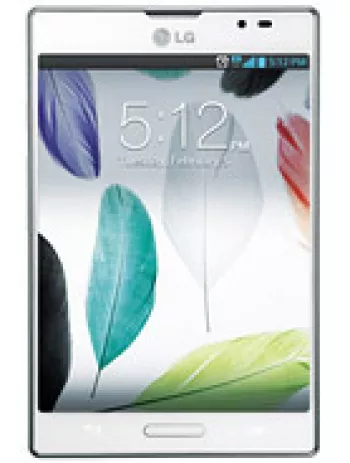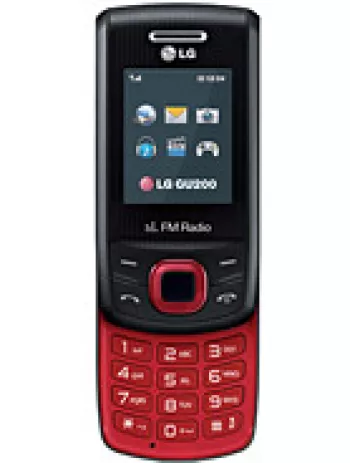
Introduction to LG L40 D160
The LG L40 D160 is a budget-friendly smartphone that was released in April 2014. Positioned as an entry-level device, it provides essential smartphone functionalities with a focus on affordability. In the following sections, we will explore the various aspects of this device, from its design and display to its hardware and performance.
Design and Build Quality
The LG L40 D160 showcases a compact design with dimensions of 109.4 x 59 x 11.9 mm and weighs 114 grams. Despite being an entry-level smartphone, it maintains a solid build quality that feels sturdy in hand. The device is constructed using durable materials and is protected by Corning Gorilla Glass 2 on the front, which provides an extra layer of protection against scratches and minor impacts. The phone is available in two classic colors: white and black.
Display
The smartphone features a 3.5-inch IPS LCD display, offering a resolution of 320 x 480 pixels. With a pixel density of approximately 165 ppi, the display delivers adequate clarity for basic tasks such as browsing the web and sending messages. However, the screen size and resolution may not be suitable for media-rich applications or extended video consumption. The display achieves a screen-to-body ratio of around 56.5%, which was typical for smartphones of that class during its release.
Performance and Hardware
Under the hood, the LG L40 D160 is powered by a Qualcomm MSM8210 Snapdragon 200 chipset built on 28 nm technology. It houses a dual-core 1.2 GHz Cortex-A7 CPU and an Adreno 302 GPU. The combination of these components ensures basic performance for everyday tasks such as phone calls, messaging, and light applications. The device includes 512MB of RAM and 4GB of internal storage, expandable via a microSDHC card slot. This configuration is sufficient for users who engage in moderate use without intensive multitasking.
Camera
On the photography front, the LG L40 D160 comes equipped with a single 3.15 MP rear camera. The camera is capable of capturing images and recording 480p video. While the camera may not compete with modern smartphone cameras, it can adequately capture memories and snapshots for social media. Lacking a front-facing camera, the device limits users to traditional photography without the option for self-portraits or video calls.
Battery Life and Power Management
The smartphone is powered by a removable Li-Ion 1700 mAh battery. This is an updated version from its initially mentioned 1540 mAh, especially in the L34C model. The battery provides up to 550 hours of standby time on 2G and 3G networks, with talk time ranging up to 14 hours on 2G and around 11 hours on 3G. The battery performance is sufficient for users who primarily use their phones for basic tasks and calls. The removable nature of the battery adds convenience for swapping out or replacing batteries when needed.
Software and User Interface
The LG L40 D160 runs on Android 4.4.2 KitKat, enhanced with LG UI 3. This operating system version offers a user-friendly interface, providing smooth navigation and a variety of customizable features. While the Android KitKat version may feel dated compared to recent updates, it still supports numerous applications and basic functionalities necessary for everyday use.
Connectivity and Network
The device supports multiple network technologies, including GSM, CDMA, HSPA, and EVDO, enabling a variety of connectivity options. It is compatible with 2G and 3G bands, providing users with decent network coverage. Internet browsing is facilitated by HSPA technology offering speeds of up to 14.4/5.76 Mbps. Additional connectivity features include Wi-Fi 802.11 b/g/n, Wi-Fi Direct, and hotspot capabilities. Bluetooth 4.0 support is available for data transfer and connecting to other devices. Unfortunately, NFC functionality is not present in this model.
Sound and Multimedia
The LG L40 D160 is equipped with a standard loudspeaker and a 3.5mm audio jack, allowing users to connect headphones or external speakers for an enhanced audio experience. The phone's multimedia capabilities are basic, with FM radio support and RDS functionality for listening to broadcast radio stations.
Sensors and Additional Features
In terms of sensors, the LG L40 D160 is limited to an accelerometer, which supports basic motion-based interactions. The device lacks advanced sensors found in more contemporary smartphones, which aligns with its positioning as a budget-friendly option. Despite this, it remains functional for users seeking essential smartphone features.
Conclusion
The LG L40 D160 is a suitable choice for users who need a reliable and straightforward smartphone for fundamental communication tasks. Its compact size, solid build quality, and essential features make it a viable option for entry-level users or as a secondary backup phone. However, users seeking high-performance capabilities, advanced photography, or the latest software features might find the device limiting. At a price point of approximately 80 EUR at launch, it offers value for those with modest smartphone needs.
Key Features of LG L40 D160
- Supports GSM, CDMA, HSPA, and EVDO technologies for versatile connectivity.
- Compact and lightweight design with dimensions of 109.4 x 59 x 11.9 mm and a weight of 114 g.
- Protected by Corning Gorilla Glass 2 for better screen durability.
- Runs on Android 4.4.2 (KitKat) with LG UI 3 for a smooth user experience.
- Powered by a Qualcomm MSM8210 Snapdragon 200 processor with dual-core 1.2 GHz Cortex-A7 CPU and Adreno 302 GPU.
- Expandable storage with a microSDHC card slot.
- FM radio with RDS support.
- Removable Li-Ion 1540 mAh battery providing up to 14 hours of talk time on 2G.
- Available in classic white and black color options.
LG L40 D160 Disadvantages
- Limited internal storage with only 4GB and 512MB RAM, which may affect app performance and storage capacity.
- Low screen resolution at 320 x 480 pixels, resulting in low pixel density (~165 ppi), which affects display clarity and sharpness.
- Single 3.15 MP rear camera with no front-facing camera, limiting photo quality and the ability for selfies or video calls.
- Outdated operating system, running Android 4.4.2 (KitKat), restricting access to newer applications and features.
- Limited processing power with a Dual-core 1.2 GHz Cortex-A7 CPU, which may not support demanding applications or multitasking effectively.
- No NFC support, reducing compatibility with contactless payment systems and other NFC-based services.
- Discontinued status, meaning no further official software updates or support from the manufacturer.
- Small battery capacity at 1540 mAh, potentially leading to limited battery life especially with moderate to heavy use.
- Navigation limited to A-GPS only, potentially affecting geolocation features and accuracy.


View Also
More Phones
All Rights Reserved +14266 Phones © Mobilawy 2025

























